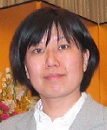
Plenary Lecture
Electrophysical and Chemical Operation of Active Neurons and Neural Groups for Synchronous Systems

Professor Yumi Takizawa
Institute of Statistical Mathematics
Japan
E-mail: takizawa@ism.ac.jp
Abstract: Electrophysical and chemical operation of active neurons remains much unknown. Conventionally pulse operations have been studied by physiological experiments. It is known that neurons in aplysia excite with positive and negative potentials. But the latter has not been identified as excitation. On the other hand, positive and negative potentials observed in unicellular organisms (noctiluca and paramecium, etc.) are analyzed as different modes of excitation. The authors have given modelling and analysis in equation to provide common basis in cell excitation. Pulse and plateau are common excitatory potentials. Modelling and analysis were brought based on electrophysical and chemical behaviors of positive and negative ions and the secondary messengers. She will provide basis of originality given from knowledge in liquid junctions and dynamic zones induced in cell cytoplasm. Operations of a single neuron have been analyzed for bipolar pulse and plateau potential generation. Pulse oscillation realizes synchronous systems for recognition of time, space, and motion of events.
Brief Biography of the Speaker: Yumi Takizawa received the Ph.D. degree from the University of Tokyo in 1994. She joined the Institute of Statistical Mathematics (ISM) as an associate professor in 1995. She has been engaged in experimental study of neural systems in weakly electric fish at the University of Virginia, USA, 1998 and 2000. The Best Paper Prize of Neurology’12, WSEAS/NAUN was awarded to this study, July 2012.